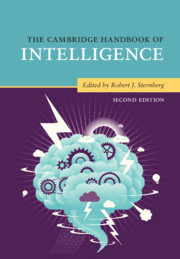Book contents
- The Cambridge Handbook of Intelligence
- The Cambridge Handbook of Intelligence
- Copyright page
- Dedication
- Contents
- Figures
- Tables
- Contributors
- Preface
- Part I Intelligence and Its Measurement
- Part II Development of Intelligence
- Part III Intelligence and Group Differences
- Part IV Biology of Intelligence
- Part V Intelligence and Information Processing
- Part VI Kinds of Intelligence
- 27 The Theory of Multiple Intelligences
- 28 The Augmented Theory of Successful Intelligence
- 29 Emotional Intelligence
- 30 Practical Intelligence
- 31 Social Intelligence
- 32 Collective Intelligence
- 33 Leadership Intelligence
- 34 Cultural Intelligence
- 35 Mating Intelligence
- 36 Consumer and Marketer Intelligence
- Part VII Intelligence and Its Role in Society
- Part VIII Intelligence and Allied Constructs
- Part IX Folk Conceptions of Intelligence
- Part X Conclusion
- Author Index
- Subject Index
- References
29 - Emotional Intelligence
from Part VI - Kinds of Intelligence
Published online by Cambridge University Press: 13 December 2019
- The Cambridge Handbook of Intelligence
- The Cambridge Handbook of Intelligence
- Copyright page
- Dedication
- Contents
- Figures
- Tables
- Contributors
- Preface
- Part I Intelligence and Its Measurement
- Part II Development of Intelligence
- Part III Intelligence and Group Differences
- Part IV Biology of Intelligence
- Part V Intelligence and Information Processing
- Part VI Kinds of Intelligence
- 27 The Theory of Multiple Intelligences
- 28 The Augmented Theory of Successful Intelligence
- 29 Emotional Intelligence
- 30 Practical Intelligence
- 31 Social Intelligence
- 32 Collective Intelligence
- 33 Leadership Intelligence
- 34 Cultural Intelligence
- 35 Mating Intelligence
- 36 Consumer and Marketer Intelligence
- Part VII Intelligence and Its Role in Society
- Part VIII Intelligence and Allied Constructs
- Part IX Folk Conceptions of Intelligence
- Part X Conclusion
- Author Index
- Subject Index
- References
Summary
The dominant conceptions of emotional intelligence can be categorized into “ability” models and “mixed” models. Ability models view emotional intelligence as a construct related to other intelligences and consisting of a set of mental abilities whereas mixed models view emotional intelligence as a blend of standard personality traits and various abilities. In this chapter, we review these models of emotional intelligence, including the measures associated with each, and provide a brief summary of the debate between ability models and mixed models. Narrowing in on the ability conception of emotional intelligence, we then discuss its behavioral and neural correlates, development, and malleability, as well as a school-based intervention designed to promote these skills. We conclude with an exploration of possibilities for the emotional intelligence research landscape in the next thirty years.
- Type
- Chapter
- Information
- The Cambridge Handbook of Intelligence , pp. 709 - 735Publisher: Cambridge University PressPrint publication year: 2020
References
- 8
- Cited by

